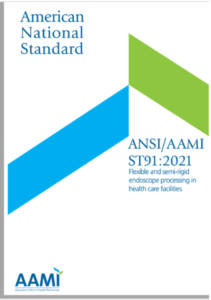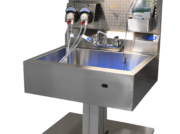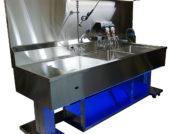
The Impact of Changing Compliance Standards
In professions like sterile processing and gastroenterology reprocessing, change is a way of life and adaptability goes a long way. As industry standards, guidelines, devices, and IFUs change, inflexible reprocessing solutions can cause problems, ranging from struggling to meet IFUs to the need for additional capital investments in equipment that departments likely don’t have the budget to purchase. Here are some examples of industry changes that made equipment inadequate or entirely obsolete.
Xi Arms
When Intuitive Surgical® released the da Vinci® Xi Surgical System in 2014, the robotic arms came with many new features and benefits; they also came with additional length and more stringent, sophisticated IFUs for reprocessing departments to learn and accommodate.
Two primary challenges came with these changes:
- Length: The standard length of the new da Vinci Xi arms was 24”, longer than previous versions. With soaking requirements that call for full submersion of the arms, many departments found that their sink basin width was inadequate, meaning full submersion couldn’t occur.

- Flushing requirements: With two ports and an IFU that calls for extended flushing times, departments that didn’t have space at their sinks for automated flushing solutions now found themselves spending more time flushing to achieve IFU compliance. This extra flushing can have a direct impact on productivity, and make departments feel as though they’re understaffed.
The impact for sterile processing departments:
- Difficulty achieving IFU compliance
- Sapped productivity and feeling short-staffed, even if case load didn’t increase
ANSI/AAMI ST91:2021 Updates
ANSI/AAMI ST91:2021 brought about many changes and updates to guidelines and standards. Among them were changes to the requirements of sinks:
“Sinks should be deep enough to allow complete immersion of the endoscope to minimize aerosolization. The size of the sink should be adequate (i.e., a minimum of 16 inches x 30 inches) to ensure that the endoscope can be positioned without tight coiling and 8 to 10 inches (20 to 25 cm) deep, enabling a person of average size to work comfortably without undue strain on the back.”
Section 4.3.2 – Sinks and Accessories; ANSI/AAMIST91:2021This update to ANSI/AAMI ST91:2021 immediately put many departments in a bind, with specific measurements being called out for sink basins in scope reprocessing, as well as directly pointing to ergonomics and the depth of basins. With many sink basins either not wide enough for proper scope coiling, or too deep for adequate ergonomics, departments had to make investments in short-term solutions because their sinks had become obsolete.
The impact:
- Compliance concerns regarding sink basin size
- Ergonomic challenges
- Additional investment of short-term solutions for obsolete sinks
Check out our blog post on other updates in ANSI/AAMI ST91:2021
These are just two examples of IFU and guideline changes putting departments in a tough situation due to capital equipment purchases that weren’t built with the future in mind. Partnering with a vendor that can provide solutions capable of evolving alongside your department as changes occur helps to ensure that the money your facility invests goes as far as it possibly can.
Starting a project or renovation in your department? Let us help!





